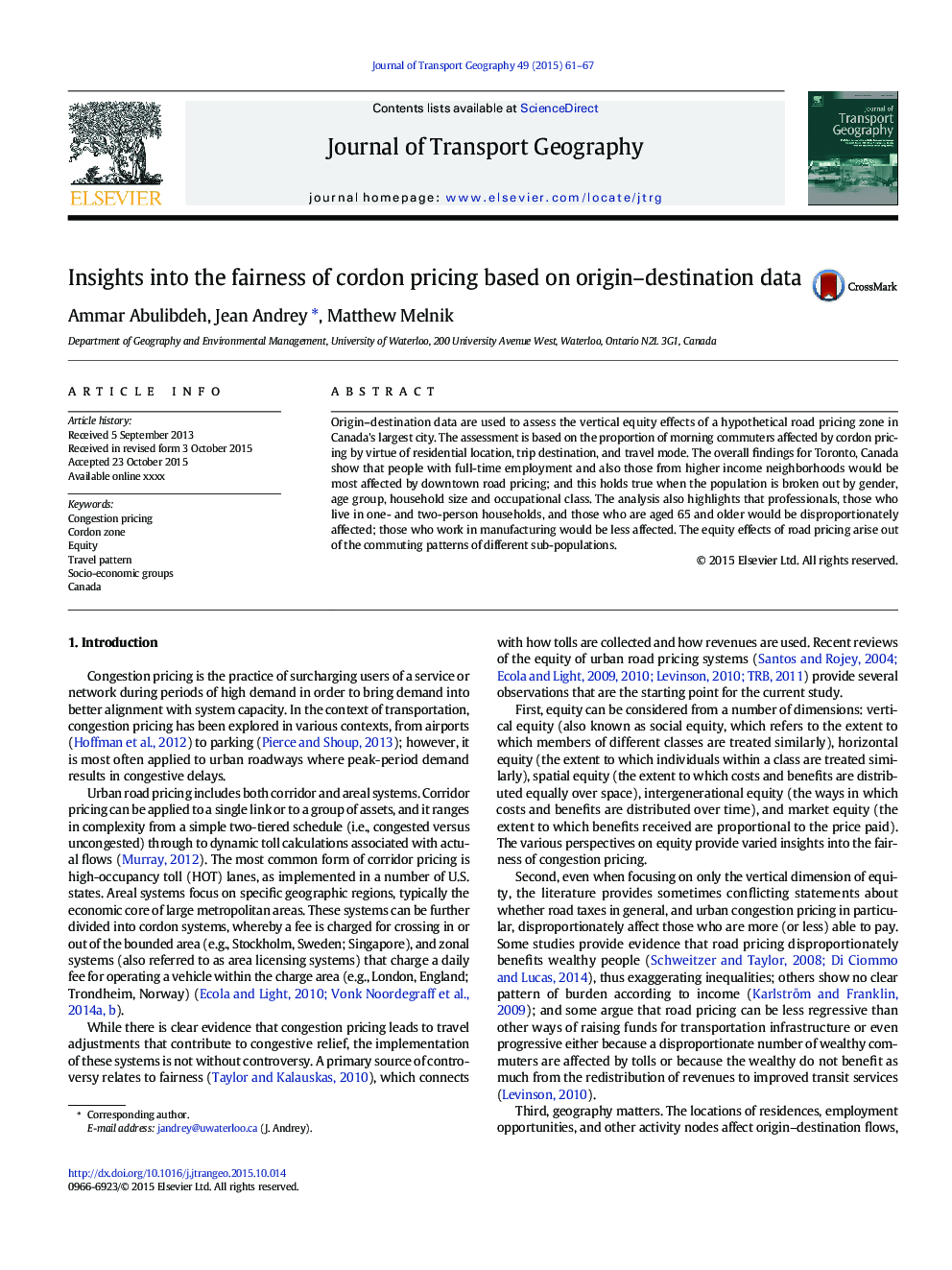| Article ID | Journal | Published Year | Pages | File Type |
|---|---|---|---|---|
| 7485729 | Journal of Transport Geography | 2015 | 7 Pages |
Abstract
Origin-destination data are used to assess the vertical equity effects of a hypothetical road pricing zone in Canada's largest city. The assessment is based on the proportion of morning commuters affected by cordon pricing by virtue of residential location, trip destination, and travel mode. The overall findings for Toronto, Canada show that people with full-time employment and also those from higher income neighborhoods would be most affected by downtown road pricing; and this holds true when the population is broken out by gender, age group, household size and occupational class. The analysis also highlights that professionals, those who live in one- and two-person households, and those who are aged 65 and older would be disproportionately affected; those who work in manufacturing would be less affected. The equity effects of road pricing arise out of the commuting patterns of different sub-populations.
Related Topics
Life Sciences
Environmental Science
Environmental Science (General)
Authors
Ammar Abulibdeh, Jean Andrey, Matthew Melnik,
